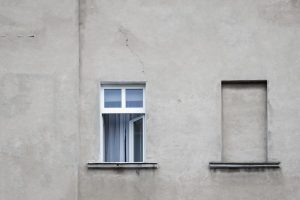What is radon?
Radon is a naturally occurring radioactive gas that escapes from the ground and can accumulate in buildings. It is a colourless, odorless gas created by the breakdown of Radium.
It cannot be seen or smelt so the only way to know it’s there is to carry out a special test.
How dangerous is radon gas to your health?
Radon gas can be dangerous if levels are high enough and if there is prolonged exposure over time. Long-term exposure to high levels of the odorless gas causes an increased risk of lung cancer.
In fact radon is the number one leading cause of lung cancer in non-smokers in the UK and is responsible for over two thousand deaths per year. It is the number two leading cause of cancer in the general population right after smoking.
Where is radon most commonly found?
Radon can be found in buildings of any type, size, age or location. That’s why if you are a homeowner, it is essential that you test your home for radon.
Properties with basements are particularly susceptible. Thus, radon tests typically test the lowest level of the home being used.
The radioactive gas is created from radium, a naturally occurring element found in all rocks and soil to one degree or another. So whether or not a home has a problem depends on how much radium is present in the soil of the structure it is built upon.
How does radon get in the home in the first place?
Radon enters the home through the concrete, floor cracks, floor drains, sump holes, dirt crawl spaces and more. Any crack or crevice in your home and it will find a way in from the ground.
How to test the levels at home – radon testing
Testing is the only way you will know if you have a problem with radon.
DIY Radon Testing Kits exist and are easy to use. Set it in place and leave it undisturbed in place for the prescribed amount of time. Then send it to a testing lab to get the results.
Otherwise, hire a professional! There are local home inspection companies specializing in radon. They set up an electronic detection devices and measurement monitors in your home.
What is an acceptable level of the gas in a home?
There is no current regulation for acceptable levels of radon in Canadian homes.
Guidelines by Health Canada recommend for radon levels to be under 200 becquerels per cubic metre (200 Bq/㎥). This guideline provides homeowners with some guidance on when to take action to reduce levels in your home.
How often should I test my home?
It is important to test for radon in different heating/cooling seasons depending on the weather in your area. This is important as the level in your home varies between the seasons.
Otherwise, it should be tested for every few years or if there are structural changes made to your home. Large changes in your home make it possible for the gas to enter more easily if there are more cracks and crevices to enter through.
How to get rid of radon. What to do if levels are too high?
If high levels of radon are found, various methods can be used to lower them. There are special ventilation systems to install in your home to reduce the levels. Otherwise, there are radon mitigation companies and specialists that solve these problems in homes.

Can you reduce radon by opening windows?
Opening windows and allowing natural ventilation to occur is a temporary solution to reducing radon. It is a solution that is effective in the short-term.
However, to truly reduce levels in your home, the best solution is to install a radon reduction system or hire a radon mitigation specialist.
Is radon worse in summer or winter?
Some homes will test out higher in the wintertime than in the summertime.
For example, a person buys a home in summertime and does a test. They find a low level of radon and may never test for it again thinking they are protected. But that same home can have a much higher concentration in the wintertime.
Advice when purchasing a property
If you are purchasing a property, it is recommended to have a test performed prior to purchasing the home. If you do find radon in the home, check out this home buyer radon protection resource and learn how to navigate the home buying process.
There are also regulations in place that require employers and landlords to carry out radon risk assessments for their properties. If you are thinking of buying a property, it is also wise to ask the current owner if they have tested for it.
If not, consider carrying out a test yourself before exchanging contracts.
—
For more information on real estate market in Vancouver, current trends, buying a home or selling a home, contact Leo Wilk – Your Top Vancouver Realtor.
Contact Leo
— Don’t forget to follow Leo Wilk on Facebook | Twitter | Youtube | Instagram

